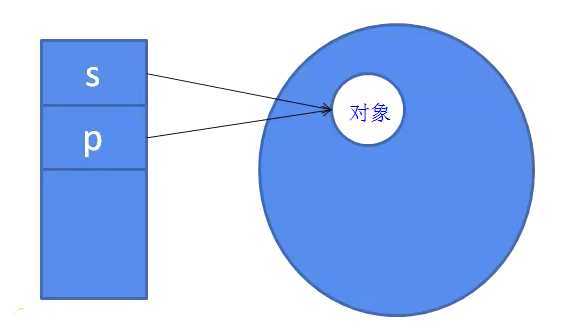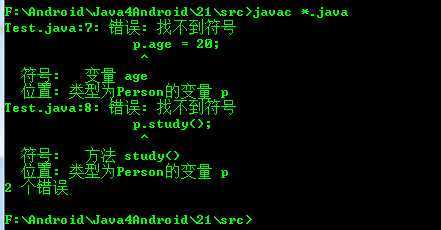标签:style blog http color ar java sp div on
对象的转型分为向上转型和向下转型
向上转型:将子类的对象赋值给父类的引用,如
Student s = new Student(); Person P = s ;
Student是Person的子类(继承)。首先声明了student的引用s,再同new关键字调用了构造函数生成student的对象,并把对象赋值给引用s,s指向对象。再把s赋值给Person类型的引用p

class Person{
String name;
void introduce(){
System.out.println("我叫" + name);
}
}
class Student extends Person{
int age;
void study(){
System.out.println("我正在学习");
}
void introduce(){
super.introduce();
System.out.println("我" + age);
}
}
class Test{
public static void main(String args[]){
Student s = new Student();
Person p = s;
//等同于 Person p = new Student();
p.name = "lisi";
p.age = 20;
p.study();
}
}

错误解释:根据上图所示,虽然s和p指向同一个对象,但一个引用能够调用的成员(变量和函数),取决于这个引用的类型,如p是Person的引用,p能调用的成员取决于Person中所定义的成员。
在父类中有个方法A,在子类中对方法A进行复写后,一个引用所调用的方法,取决于这个引用所指向的对象。如p调用introduce(),结果如下,p指向Student对象。
p.introduce();

向下转型:将父类的对象赋值给子类的引用,如
Student s1 = new Student(); Person P = s1 ; Student s2 = (Student)p;//强制类型转换

向下转型的前提首先进行向上转型。父类对象的引用无法直接转型为子类的类型

标签:style blog http color ar java sp div on
原文地址:http://www.cnblogs.com/chavez-wang/p/4058199.html